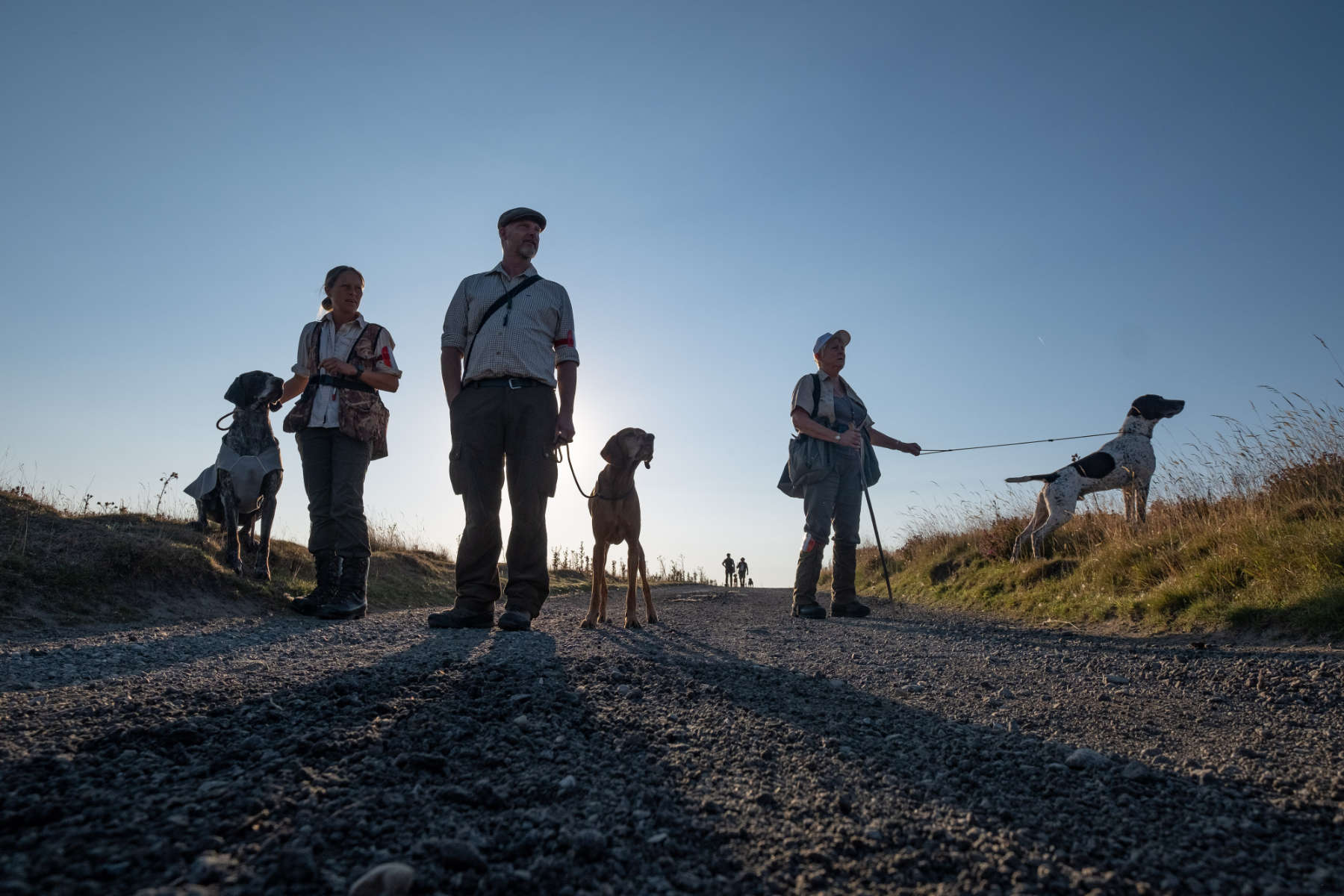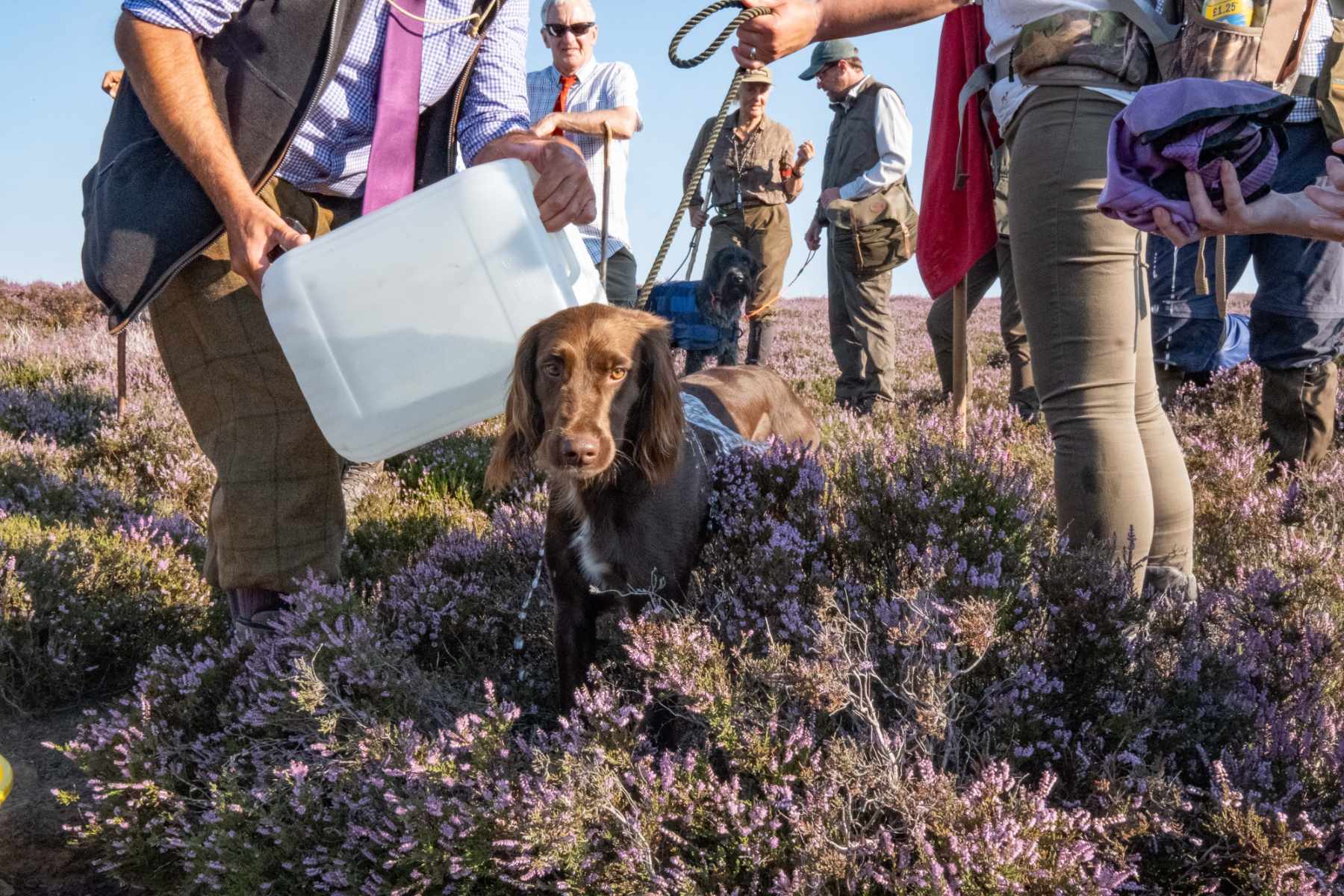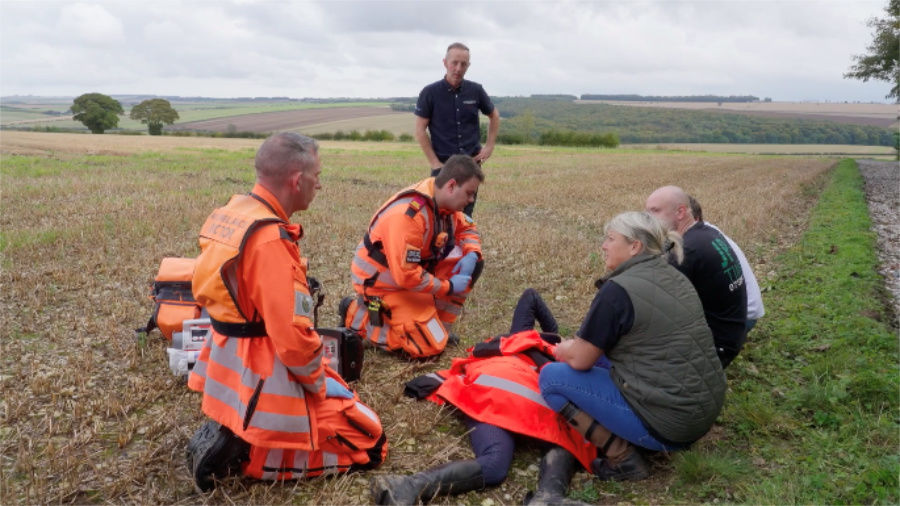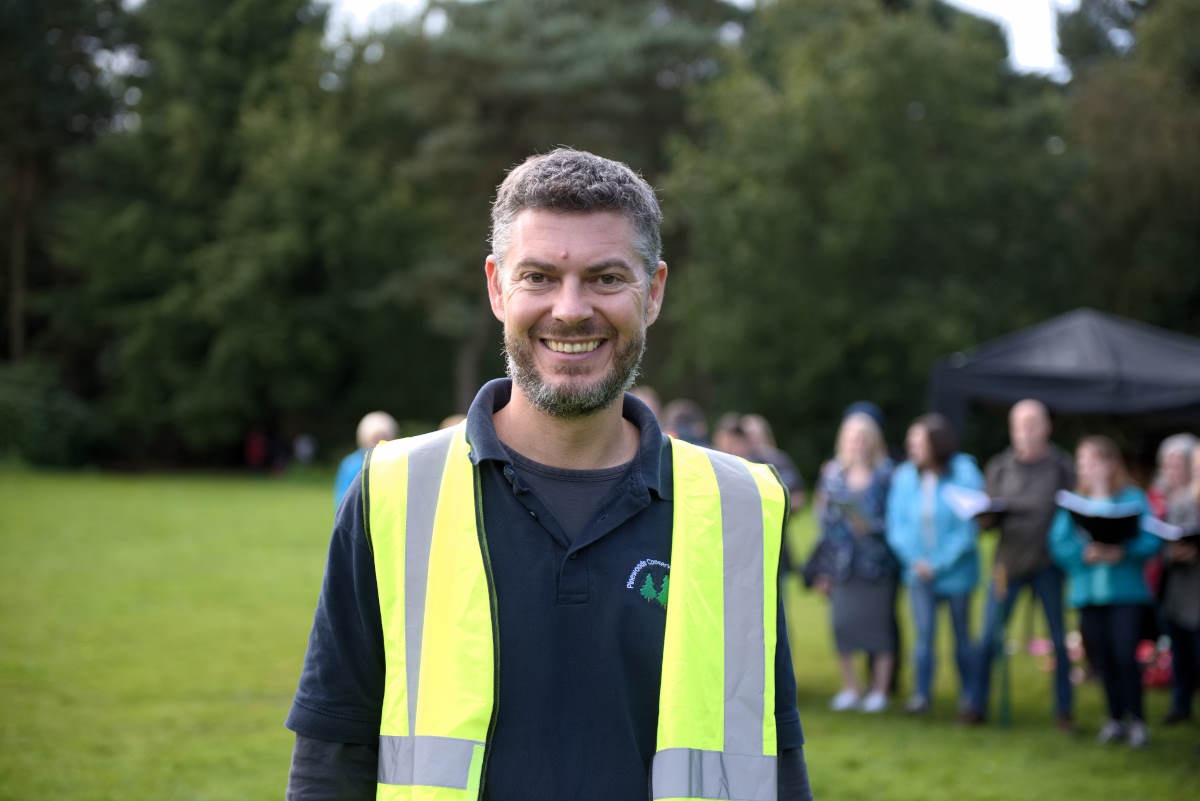Rural communities and businesses were today celebrating the Glorious 12th, the start of the grouse shooting season.
Pubs, hotels, shops and suppliers voiced their support for the social, economic and environmental benefits that come with a successful grouse programme which can run until 10th December.
One of the first grouse moors in action today was near Whitby on the North York Moors where country sports enthusiasts were putting gundog trainers and their dogs through their paces, pointing and retrieving grouse.
Head keeper Mark Taylor said: “It’s a massive boost for everyone in the area to see a normal shooting season get underway. It means so much to people from different walks of rural life. We’re looking forward to getting everybody back together again as well as the shooting parties who come from all over Europe and further afield to the moors in the North of England.”
Lucie Hustler, from the Norfolk and Suffolk field trial club, was one of the first on the moors this morning with her two-year-old German short-haired pointer, Oxo.
Lucie said:
The heather-clad North York Moors have never looked better and our dogs feel right at home here.
We all know how important grouse shooting is and the benefits it provides for hotels and businesses as well as making such a positive contribution to habitat and species conservation.
Paul Kendall of Kendall & Sons butchers in Pateley Bridge in the Yorkshire Dales, said:
Sustainable game management is of massive benefit for the whole dale. The shooting season brings people together and it brings people into the area who have never been here before. Once they see the beauty of the scenery they come back again and again. We’ve been here for 40 years and we get good orders direct from estates and from those working on shoot days, plus the local pubs all get an increase in trade. It’s not just the revenue though, it’s the spirit of the season – shooting and farming is what keeps the countryside going.
Angela Snow of the Crown Hotel in Middlesmoor, North Yorkshire, said:
The season generates a lot of business for us, from all the shooting parties who come and stay here year after year and all the beaters who come for a drink or a meal at the end of the day. Customers really enjoy fresh game on the menu and we are supplied by a local game dealer. Getting birds fresh from the moor, half a mile up the hill and being able to serve them to customers on the day is such a treat – the most local, wild, seasonal food you can get!
Jill Newbould, manager of J Todd & Son Hardware suppliers in Summerbridge near Harrogate, North Yorkshire, said:
We work for estates year-round, providing equipment and machinery servicing. We also sell cartridges and other supplies to shooting parties when they come. The season is of huge importance to us.
Amanda Anderson, director of the Moorland Association, said:
A wide range of species and habitats thrive as a result of careful work put in by gamekeepers and estates all year round. Early indications suggest that many moors will be able to operate well from the 12th this year which means that they have a sustainable surplus of wild grouse to harvest. This is very welcome after two difficult years of Covid restrictions. A hungry grub, called heather beetle, has also decimated heather in the last few years so it is great to see the vegetation bouncing back and supporting its unique wildlife. Across the north of England small businesses receive a major boost from shooting tourism.
Grouse shooting is a rural tradition and an iconic one at that – but more importantly it underpins investment, it creates jobs and it is crucial to upland communities.
In England grouse moor management creates 42,500 work-days a year and over 1,500 full-time jobs. Of these, 700 are directly involved in grouse moor management, with a further 820 jobs in related services and industries.
Moorland Association members spend £52.5 million a year on moorland conservation which continues year-round, whether or not the season is successful.
Red grouse are wild birds and their numbers fluctuate year-on-year, often dependent on the weather in the early spring.
Counts conducted in July provide an indication of whether there are sufficient numbers to offer shoot days, with a sustainable population of grouse left on the hill each year to nest and breed the following spring.
Biosecurity measures are in place on the moors this year to prevent any outbreak of avian influenza, including foot dips and vehicle spraying.








